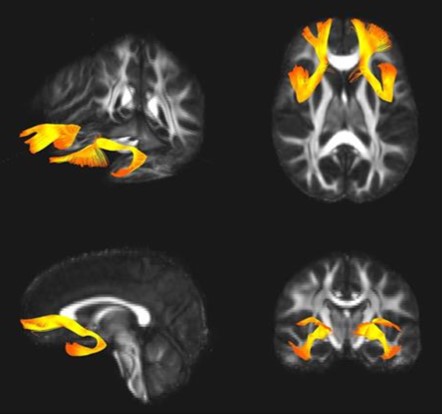In collaboration with the Mondor Institute for Biomedical Research (INSERM) and Henri-Mondor University Hospitals (University Hospital of Île-de-France), a psychiatry research team at Neurospin (Frédéric-Joliot Institute) has studied a variation of the gene Snap25 which is involved in neurotransmission and associated with schizophrenia, bipolar disorder, and hyperactivity/attention disorder.
The researchers benefited from the analysis of three cohorts of patients: 461 patients with schizophrenia, 71 other subjects including 25 bipolar patients and 121 healthy subjects. Several studies, including comparison of the impact of Snap25 variation through MRI images of the brain, show that the variation of this gene modifies the expression of the associated protein in the brain, impacting information processing between regions involved in emotion regulation. In addition, the at-risk variant is associated with a larger volume of a brain area, the amygdala, and impaired prefrontal-limbic functional connectivity.
This study confirms the existence of a risk factor common to schizophrenia and bipolar disorder: variation of the Snap25 gene. These disabling diseases are very common—each affecting about 1% of the adult population. In addition to shedding light on their mechanism, this study suggests the existence of potential symptoms in patients with various diseases in which the gene is involved.
This result was the subject of a press release.

Connexions fronto-limbiques associé à la variation de SNAP25 visualisé en tractographie par IRM de diffusion. © Stéphane Jamain (data from diffusion-imaging.com)